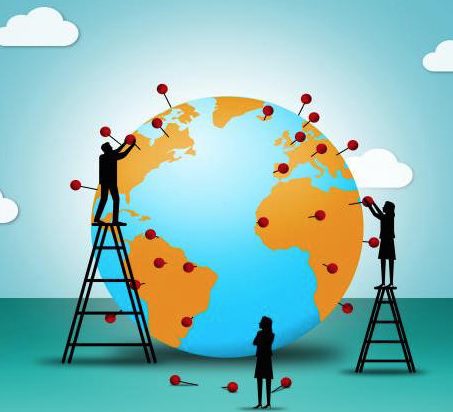Localization means more than just translation, you must adapt to meet your audience’s needs
Selling to a worldwide audience at first might seem like the ideal way to increase your profits, but if you don’t get your messaging right you could end up talking your way out of increased revenue.
Retail E-commerce sales reached 7.4% of all retail sales in 2016, and is set to continue rising for the foreseeable future. It is predicted to increase to over $4 trillion by 2020, making up 15% of all retail spending globally; much of this percentage comes from international sales. Currently the UK holds the highest percentage of online shoppers at 15.4% of all retail sales, followed by China (13.8%), Norway (11.5%) and Finland (10.8%), and the leading destination for those sales is the United States, followed by China, the UK and Germany. By 2020, nearly 1 billion consumers – almost half of online customers, will purchase products and services from a business abroad.
Find the right words for successful cross-border e-commerce
If you’re an Australian shopper purchasing textbooks from the UK, language won’t pose a problem for you. However, if you’re a Chinese customer buying clothing from an American outlet, language will play a much larger role in your purchasing decision. To prove this point, 95% of Chinese customers prefer to shop on websites that cater for their own language, according to a recent Forrester report. In Europe, that number is almost half, at 42%, and yet still represents a sizable population that must be catered to.
International Ecommerce businesses looking to increase revenue through internationalization face a number of challenges when targeting foreign audiences, not least of which is the complexity of translation and localization. The ability to present your offering to multiple markets in their native language must be at the core of your expansion strategy, and translation must be treated with the utmost care. Stories of poor translations are all too common in international business, and can cause a blow to the bottom line rather than a boost. Avoid such pitfalls by localizing your website through not just translating content, but also adapting it to a local audience.
Translations that never got off the ground
Airlines have provided some of the best examples of faulty translations without localization taken into account. One example is Braniff Airlines, boasting of all-leather seats on their planes with the slogan ‘Fly in Leather’. The print, TV and radio ads gave the image of a high-class airline until it came to translating the slogan for a Spanish-language radio ad, aired for the Florida market. While ‘en cuero’ technically does mean ‘in leather’, in colloquial Spanish it means ‘naked’. ‘Flying naked’ isn’t quite the slogan that Braniff intended.
A similar mistake was made by another American airline who promoted their posh ‘rendezvous lounges’ on their 747s. The campaign was met with success until it reached the Brazilian market, where the nuanced understanding for ‘rendez-vous’ is a room rented for prostitution. Understandably, Brazilians were reluctant to use an airline boasting this feature.
Successful translation includes function and cultural expectations
Both function and culture must be considered to achieve successful native language translation and meet the expectations of the target audience. Functional content is easier to spot and amend as it is logic based rather than tradition or experience based. Examples include:
- Date and time formats (05/16/17 versus 16/05/17)
- Text direction (left to right versus right to left)
- Weights, measurements and currency (metric versus imperial, USD versus CNY)
The cultural or traditional aspect of translation is harder to define, and simply translating words can lead to more confusion than clarity, making it a delicate operation. To successfully translate content to a native language, cultural expectations must be addressed while avoiding offense in relation to images, icons, humor, etiquette, values, beliefs, and traditions. When marketing a product or service abroad, translation is not enough; localization is the required method to ensure your message is clearly understood.
When localization works, success follows
Coca-Cola clearly put effort into translating their marketing messages well and does a great job of localization. When the 2011/2012 Australian Share-a-Coke campaign went global, the 150 most popular Australian names were changed for Denmark, Norway, and the UK. In doing this, Coke recognized that correct localization often goes beyond simple name changes.
In China, the sheer volume of first names made them implausible to use, and instead Coke bottles displayed common nicknames such as Classmate and Close Friend along with popular compliments from Chinese social media. This proved to be a hit with China’s youth market, and led to a spike in Coca-Cola sales within the region.
Think global, speak local
Globalization is clearly a way to increase revenue opportunities. Reaching out to new markets is the mainstay of growing a business, and cross-border trading is predicted to continue growing for years to come. By planning your linguistic messages as part of your growth strategy now, you’ll be ready to claim your stake of global customers and expand your business beyond geographic barriers. Investing in localization will ensure you reach your target audience with the right messages, boost your bottom line and become less dependent on your own local markets.
Company Bio: Morningside Translations is a premiere global translation agency, servicing companies across industries.The company has helped businesses localize their website content and optimize success by transforming language barriers into revenue-maximizing opportunities.

